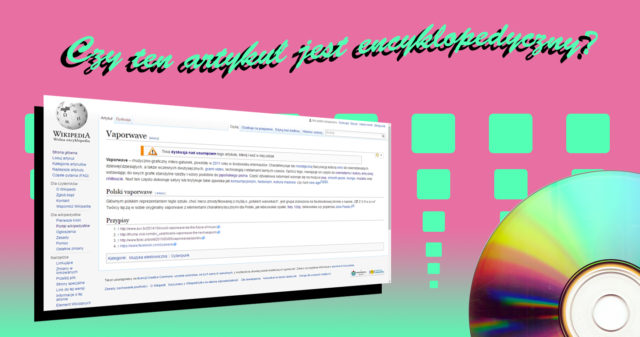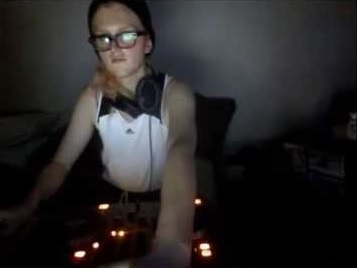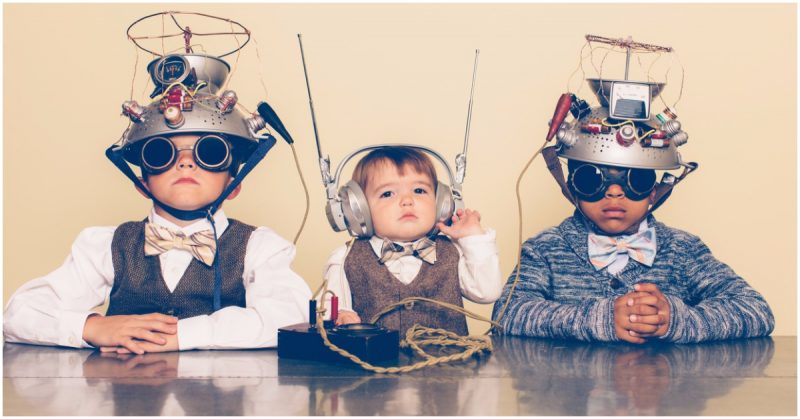Art and music can give a clear picture of what troubles certain generations in society. Genres are either nostalgic, drawing inspiration from the issues of the past, or looking forward to create from the possibilities the future offers. There are also those that are a strange mixture of the past and future. One of those retro-futuristic genres emerged recently, called vaporwave. The first genre created purely on the internet, vaporwave is primarily inspired by the early cyber and pop culture of the 1990s. This glitchy retro music genre also has a visual component and quickly found a lot of enthusiasts online, thus becoming a whole new subculture.
Although many people consider it to be a whole new genre, vaporwave actually existed (or still exists as a quotation in actual musical styles) as a “micro-genre” of the electronic music scene and, later, digital art. The building blocks of this purely digital form of expression are samples of the late 1980s and the 1990s styles of music such as smooth jazz, R&B, lounge music, and elevator music. This genre uses other techniques, including a lot of track manipulation; cutting and gluing various effects and sounds over an existing track. One could say that vaporwave is a reincarnation of dadaism and its acoustic and visual collages. So how did vaporwave, the retro-futuristic subculture, come to exist?

Many contemporary music critics associate the birth of vaporwave with online producers such as James Ferraro, Daniel Lopatin, and Vektroid (Ramona Xavier). Vektroid with her 2011 album, Floral Shoppe, is often credited as the one that set the standards of the genre. Soon many other online producers, both amateur and professional, made similar albums. Instead of taking the usual road of making a hard copy of their creations, vaporwave producers offered and promoted their products on websites such as Last.fm, Bandcamp, Soundcloud, Reddit, and 4chan.
Visually speaking, vaporwave is a goofy mixture of hilarious 1990s music videos, some retro web designs, and early internet images. To make their art even goofier, vaporwave enthusiasts add glitch art and cyberpunk themes to their designs. Imagine a Madonna video mixed with flashing images of the Windows 95 logo and the iconic cloudy sky background, frosted with some psychedelic glitches.
The peculiar aesthetics (or “AESTHETICS” as vaporwavers usually write it) evoke strangely pleasant and nostalgic feelings about our not so distant past. Vaporwave music does the same with sounds from this particular era: a slowed-down smooth jazz or an R&B song from the 1990s that seems like it goes on forever in continuous loops with an added echo effect. This makes vaporwave sound like those corporate stock music recordings that we usually listen during product demonstrations, infomercials, or at the supermarkets and malls, but with an added “uncanny” element.

In the style of a true avant-garde movement, vaporwave follows some subversive and progressive principles. Vaporwave artists usually work under pseudonyms. They often present themselves as strangely named collectives and entities, or fictional corporations. They don’t have biographies; they solely exist in the space of the world wide web and offer their art for download (usually free).
There are many different theories about the origins of vaporwave–and this is not so strange, considering it was created online, where anybody could claim anything. Music critics agree that Vektroid’s album Floral Shoppe is the first true representative of the genre, but the origins can be traced back to 2010 when Daniel Lopatin (a.k.a Chuck Person) made his album Eccojams vol.1. The artwork on the cover of the album was inspired by video game packaging from the 1992 game called Ecco the Dolphin. This album served as an inspiration for many people, mostly millennials, to create what would soon become the new internet subculture.

According to most critics, vaporwave is a satirical form of expression. Through its nostalgic, over exaggerated, and surrealistic usage of 1990s pop culture, technology, and advertising styles, in its own way, vaporwave criticizes mainstream consumerism in society, and makes fun of it. Music critic Adam Harper from Dummy Mag explains that vaporwavers are, in their essence, anti-capitalists who try to unveil the evil-doings of the modern “pop-culture industry” that mass-produces tons of “tasty” and repetitive sounds. He also points out that the term vaporwave in corporate language signifies a product that is promoted but never made and released. A perfect name for a genre that tries to stigmatize consumerism by using samples of a bygone era and constructing fictionalized products with them.
Politics and economy aside, vaporwave and all those similar microgenres are a good example of our future. Cultural changes are constantly sped up by technology that evolves on an almost daily basis. It took years in the past for something to be established as a genre, but not anymore. What was popular yesterday may be a thing of the past today. It looks like the definition of what is “vintage” and what is “retro,” or “ancient,” should be slightly modified.
